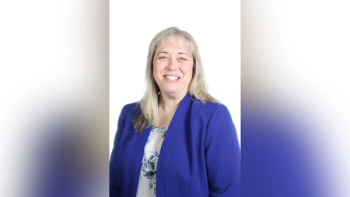
Implementing an RBM Approach to Clinical Trials: Keeping It Simple
Using the five steps to a risk management plan from other industries--Identify, Assess, Plan, Track and Control--to inform a RBM approach in clinical trials.
Risk management principles are widely used in other industries like aviation, finance etc. with a five steps approach – Identify, Assess, Plan, Track and Control. When applying a risk-based approach to clinical trials, one needs to identify the risks to the critical data and processes that are very important to achieve the study objectives. Following are some examples of critical data and procedures:
Critical data ( Examples)
Critical Processes ( Examples)
Similarly, it is very important to identify the risks related to site performance variables to monitor them during the study. The key site performance variables are as follows:
Site Performance Variables
After identifying risks, we need to identify the sources or root causes of these risks and assess them further to see the probability of occurrence (likelihood), type of impact (consequence) on the study objectives, and to decide the risk level or risk score using 1 to 3 risk matrix or 1 to 5 risk matrix. The detectability is also used to assess the risk level. Based on this, risks can be categorized as low, medium and high. The risks falling in medium, high categories need to have close monitoring and strong action planning to take care of them if they occur during the study. Also, these risks are acceptable up to certain level, so it is necessary to decide threshold or tolerance limits beyond the deployments of “planned actions” for the risks. For example, the risks/KRIs and thresholds for eCRF completion rate could be ‘>20% CRFs pending for more than 30 days.’ For patient recruitment, it could be ‘>20% of sites are below expected recruitment rate,’ which means for patient recruitment risk during study conduct, when the threshold of ‘> 20% of sites are below expected recruitment rate’ is reached, it gives an action alert to follow up on the sites for the planned strategies to be deployed to control this risk.
As far as the “Plan” part of risk management is concerned, there are generally four types of action planning , including Avoid, Transfer, Accept and Mitigate. Avoid, is self-explanatory--avoid the risk if it is real show stopper e.g. not including a country in clinical plan if there is no proper regulatory approval processes or uncertainties related to the study approval timelines. “Transfer” is any potential risk response outside of the sphere of influence of the team involved, it may be necessary to identify an alternative group to whom the risk could be transferred for action or decision-making. “Accept” is accepting the risk to a certain extent considering the benefits. ‘Mitigate’ response is very commonly used. Mitigation actions may have different objective, such as, eliminate the risk completely, minimize the impact of the risk, reduce the likelihood of the risk occurring, or increase the chances of the risk being detected if it occurs. An example of mitigation response could be keeping close tabs on an investigational site on a study with little or no GCP experience. This risk can be mitigated by close monitoring of the site or additional training to the site.
Risk-based monitoring plan
To ensure last two steps of risk management cycle i.e Track and Control, one needs to have a proper RBM plan in place to ensure proper tracking mechanisms of the risks identified in the beginning and to assess if there are new risks are arising during the conduct of the study. The risk based monitoring plan will have two distinct part – Centralized Monitoring and Onsite/Off-site monitoring. The following includes the key attributes of an RBM Plan.
- Types of monitoring to be performed and identify the risk/s being managed by each type
- Centralized & On/Off-site
- Detail the criteria for determining the timing and frequency of monitoring activities – this also depends on the complexity of the study design, type of study population involved (e.g. seriously ill or vulnerable patients), geographic spread of the study and type of endpoint assessment etc.
- The actions comprising each type of monitoring
- Actions planned ( in case risks occur)
- Documentations requirements to report central as well as on/off-site monitoring findings, escalations/resolutions done etc.
- Communication plan
- Events or results that should trigger changes in planned monitoring activity e.g. increased protocol deviations/violations, higher dropped rate etc.
- Roles , responsibilities & training – this includes role & responsibilities of central monitors, their training needs etc.
- Overall quality management & compliance- describing site specific training or audits planned
Centralized monitoring
Centralized monitoring is a remote evaluation carried out by sponsor personnel or representatives (e.g. data management personnel, statistical or clinical monitors) at a location other than the site(s) at which the clinical investigation is being conducted. Centralized monitoring offers many of the capabilities of on-site monitoring, as well as additional ones, and therefore FDA guidance document encourages the greater reliance on centralized monitoring practices wherever appropriate. It allows improved monitoring of critical data and processes for quality and patients safety using analytical and visualization tools. It helps early identification of risks/issues and keeps track of site performances with timely corrective actions. Centralized monitoring also increases the efficiencies of on-site monitors and they are more focused while they go for site visits. It reduces on-site monitoring visits and creates overall efficiencies in clinical trial management. Centralized monitoring offers a good option for oversight of study vendor/CRO or CRAs performances.
Central monitors
Due to introduction of centralized monitoring, the central monitor is emerging as an important role in RBM. The responsibilities of this role are to look at risk reports ongoing basis to identify the risks, trends and patterns and then escalate to the relevant stakeholders on a timely basis. It is helpful if they have the following attributes to support these new responsibilities:
- Good knowledge of overall clinical trial management, understanding of the protocol, study associated risks and their significance
- Clinical operations and data management knowledge to identify and provide insight into trends or outliers in data
- Critical thinking and analytical skills: define and analyze data from complex, overlapping domains to facilitate well-supported decisions
- Excellent communication and coordination skills
- Ability to use the available technologies effectively
Technology
Technology plays a critical role in implementation of RBM. The technology should support two important aspects in RBM implementation--one aspect is overall risk management part as risk management tool to identify, assess, plan and for tracking of risks and issues. The second aspect is analytical and visualization tool to support centralized monitoring.
The key features of a risk management tool include,
- Provide list of the risk library relevant to clinical trials/programs
- Effectively support risk identification, assessment and categorization process ( with risk score or risk categorization)
- Support risk tracking–able to capture risk changes effectively
- Able to generate alerts/communication to relevant stakeholders when threshold/trigger is reached
- Provide the action plan as decided for mitigation/controlling
- Track issue management, including identification, escalation and resolution
- Able to generate relevant documentation related to risk identified, categorization (risk scoring), risk level changes, escalation, communication, issue management etc.
- Generate audit trail
The key features of analytical and visualization tools are,
- Able to integrate with various data sources
- Collate and analyze the data from various sources like EDC, CTMS, ePRO, IRT etc.
- Produce graphical/visual representations of analyses and allow the export of the reports in PDF, excel etc.
- Identify trends, patterns, and outliers ongoing basis to assess performance at the trial, program, country, site, patient level
- Proactively generate alerts when risk indicator values meet predetermined thresholds
- Provide functionality to send alters to relevant system/stake-holders
- Allow for dynamic redefinition and modifications to new risk indicators, thresholds, and alerts
RBM metrics
To assess the performance of RBM implementation, one can look into the following netrics indicators and their definitions.
Quality Metrics
Timelines Metrics
Budgetary Metrics
Conclusion
RBM is an innovative and smart approach available to improve study conduct and management. It needs process change, new robust technology and resource alignment, training. Currently, the adoption of RBM is slow as the industry is trying to get more confidence on the new processes, technology and new resource role requirements. However, it is the way to move forward as RBM helps to improve data quality, ensures better monitoring of patient safety. It also optimizes on-site monitoring visits and builds overall cost efficiecincies in the operations.
Ashok Ghone, Ph.D. is Vice-President, Global Services at MakroCare, and a member of Applied Clinical Trials Editorial Advisory Board. He can be contacted at
Newsletter
Stay current in clinical research with Applied Clinical Trials, providing expert insights, regulatory updates, and practical strategies for successful clinical trial design and execution.






.png)



.png)



.png)
.png)
